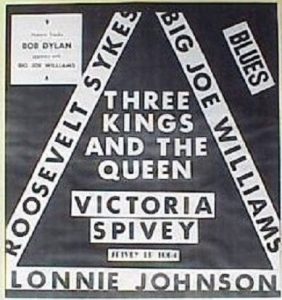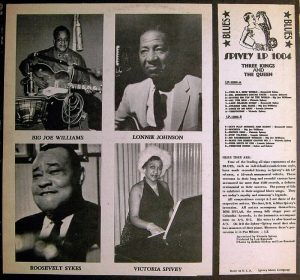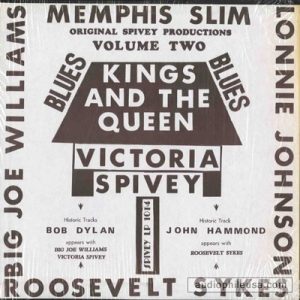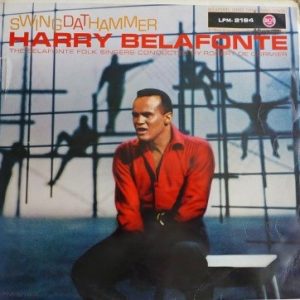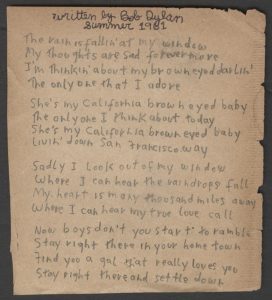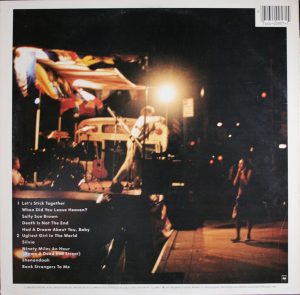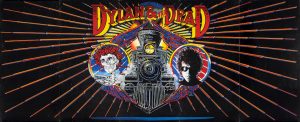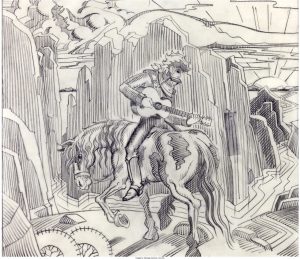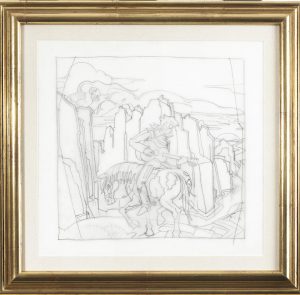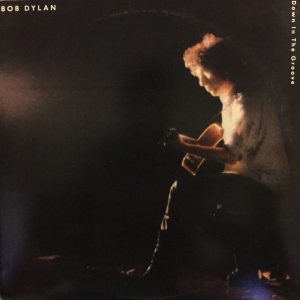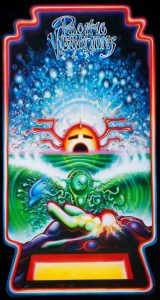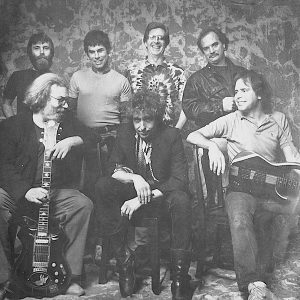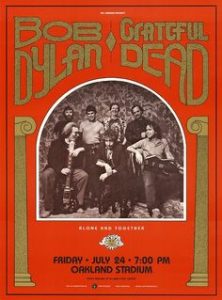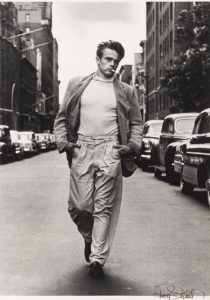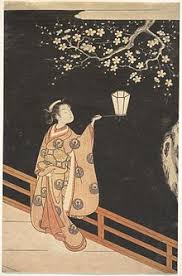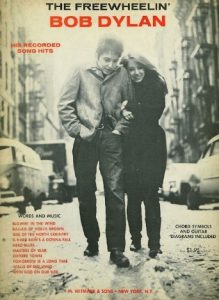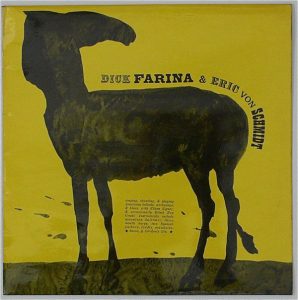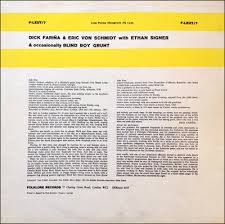By Aaron Galbraith (song selection and introductions) and Tony Attwood (meandering pontifications while the music plays).
This time we have looked for John Wesley Harding covers. So without further ado…
Indigo Girls – All Along The Watchtower.
Aaron: I liked this version a lot; lots of passion. Even if you don’t, you should be happy as I also found a 12 minute prog rock version by a group called Affinity! But I decided to include the Indigo Girls one – I just couldn’t do that to you!
Tony: I don’t know this band but on hearing the instrumental introduction I thought, “Wow this is going to be good,” but then the lead vocalist came in, and for me, as soon as she pronounced, “I gotta tell you now” it all fell apart. I suppose that is my prejudice – I just don’t think you do that in a Dylan piece – quite simply because Dylan eschews the commonplace conventions. He doesn’t tell us he’s going to tell it like it is, because he’s so far beyond that, it would be nonsense. (See also the end of this article in about half an hour’s time).
It does come across to me as a shout, and that is a great shame because in the instrumental interludes this really is fine music. Ah well…
Aaron: Now here are two tracks by a lady called Jessica Rhayne. They are from her Dylan covers album Just Like A Woman. I loved both of these so decided to include both.
Jessica Rhayne: I Dreamed I Saw St Augustine
Tony: If you’ve read my ramblings in this series before you’ll know I try and write the the commentaries as I hear the songs selected by Aaron, and thus it was that I heard “Watchtower” without any idea what was coming next.
But this is beautiful. And the harmonies – the bass player has such a beautiful tenor voice to sing along with Jessica Rhayne; it was elegant and delightful before the verse where he entered, but that voice of his added a lot to it. Very taunting of the director not to let us see the bass player when he first comes in.
This really is how a song like this should be undertaken – understanding the original and exploring it to see if it can be taken further – which in this case it can. Of course Hendrix didn’t do that with the Watchtower; he took the original and tore it apart – as needed to happen (see also the final review in this article) but doing that is a once every five or ten years event. Anyone can do it, very very few can do it well.
Jessica Rhaye: As I Went Out One Morning
Oh wow this bassist has a range and a half, and it really does fit with Ms Rhayne. What is really impressive here is that these songs are all very simple – most of them are straight three verses and that’s that. So there is not much to work with, but as far as I remember that second chord the group put into lines one and two was not in the Dylan original. They use it later as well, and it works perfectly.
There is no temptation to go over the top, even with the slightly distorted guitar near the end. This really is a re-interpretation that carries on the tradition and feeling of the original song. It is music that I want to come back to and experience again, no matter how well I know the songs.
Joan Baez – I pity the poor immigrant.
Aaron: Thea Gilmore does this one also but I love Joan’s version best.
Tony: With Joan we know that we are fairly likely to get an understanding interpretation, with gentle reworkings, delicately handled. And that is exactly what we have here.
The only problem is that I find many of Joan Baez’ reworkings so respectfully handled that there are no surprises, and somehow I find that I like and want surprises. I love the original Dylan recordings, but the covers that really move me are the ones that go that little bit further.
The pianist does his/her best within the context but it still doesn’t make think, “oh wow I am hearing elements in this song that I have never heard before”. Yes it does make me hear that title line more uncomfortably, and that I guess is part of the purpose, but not that much more.
It’s nice, it’s worthy, but I am not moved to play it again.
And yes Aaron I have noticed that you have passed Thea Gilmore aside. You won’t get away with it you know.
Rita Coolidge – I’ll be your baby tonight.
Aaron: Lastly [actually no Aaron, as I’m slipping in an extra one as you probably guessed I would] we’ll finish up with one of the most covered of all Dylan songs – I’ll Be Your Baby Tonight. I listed to a fair few of these before deciding which to select, including Marianne Faithful, Maria Muldaur, Barb Jungr, Judy Rodman, Norah Jones and (better than I expected) Goldie Hawn.
Although the Norah Jones version is excellent and definitely worth seeking out., I eventually went with this one by Rita Coolidge. It’s interesting and a different arrangement than I’ve heard before plus she’s an artist we’ve not covered in this series before.
T0ny: Spot on choice here Aaron. This is what music sounds like with a good producer. You’ve got a whole lot of quality musicians in here all using their instruments to say “listen to me, listen to me” and somehow, almost all of the time, they are kept under control.
Just listen to the harmonica and twangy guitar playing a duet in the instrumental break.
And the great thing is that they are not afraid to take it down and make it nice and reserved again, without the musicians falling over each other. Bob’s original meaning of the song is retained too, which is always a bonus.
Aaron: P.S. here’s that Affinity track (turns out I could do that to you 😀)
Tony: And one returned to you… just keep scrolling down.
Tony: This works for me at first because it is interesting and original at every turn. We know from the first second what the song is, but the vocalist keeps us fascinated as we ponder where she is going – the fade out and down at the end of the first verse is totally unexpected and allows the instrumentalists then to take us in a different direction. Very clever arranging in my view.
OK so the keyboard player sounds like he is stuck somewhere around 1969, but well, some 1969 keyboard playing was quite enjoyable in its way. The problem though is that hearing the first prolonged instrumental break once is fine, but if I had the album I am not sure I would play is twice. Especially not when know just how many minutes of my life are going to be taken up listening the the organist indulge his/her fantasies.
But, yes, it is fun to be taken back to the old days. I can almost see the leader giving the nod to say “ok that’s enough extemporisation” while the pianist keeps his eyes shut tight – but still does end as required.
It almost makes me want to get my old Yes albums out. Almost. Not quite. But almost – and that was because of the second solo. I’d got the idea with the first one, and there is nothing more in the second break to be heard. In my mind I see 20 something gentlemen with exceeding long hair, nodding away with hair flapping about from side to side. They could have cut a lot and made the track shorter, and rather more enjoyable. But then it wouldn’t be the 70s would it.
But now, if you have waded through all eleven minutes of the Watchtower you’ll need to recover. If you are still listening, just stop it, it doesn’t change. What happens next however, if you don’t know it, will (as we used to say in the ancient days) “blow your mind”. Besides in the above version of Watchtower, the song ends on the subdominant rather than the tonic, which is extremely uncomfortable. It is, if I might put it crudely, rather like going to the toilet, and then leaving, knowing that there was more to be done.
But enough of such comparisons, let us move on…
Thea Gilmore Drifters’ Escape
Tony: If you are a regular on this site, you will have probably stumbled across the fact that I rate the largely ignored “Drifter’s Escape” as one of Dylan’s great, but mostly unnoticed, works. It is the perfect example of his Kafkaesque period in which nothing at all makes sense although on the surface it momentarily appears that it should do.
Sadly I never found Dylan’s live reworkings of the song did it justice – it was as if he knew he had something there, but wasn’t quite sure what.
And so it all remained until Thea Gilmore came along – as I have mentioned on this site before. Quite often. Rather a lot in fact. I imagine Aaron left it out from his selection just to taunt me.
I have tried a thousand times to explain my devotion to this song, and the contrast between line one and two in this version goes some way. As does the addition of the harmony vocal on the third line.
And we end that first verse with the line, “And I still do not know what I’ve done wrong.” And isn’t that just how it always is?
This is the story of chaos, in a land in which nothing makes any sense at all – which is by and large what the whole JWH album is about. But here the music adds to the context of looking at something which ought to make sense but doesn’t.
The crying out of the attendant and the nurse is one of the most magic moments in Dylan – totally illogical and weird, and here treated in a way that pushes us on into the chaos of people who ought to be making sense but aren’t. Probably only Talking Heads with the Stop Making Sense tour got as close to this feeling that really nothing does make any sense, but it just is, and we are in the middle of it.
This really is an utterly sublime moment of interpretation of Dylan; Dylan in one of his most difficult phases with the words given their most fulsome, fearsome, chaotic meaning.
Yes of course Hendrix did this with the Watchtower, that equally meaningless picture of senselessness, but I suppose I have lived my whole life with Watchtower as the expression of Dylan and Kafka. It was, I guess, with an utter sense of relief that I found a second rendition of this song that made the nonsense make no sense in a perfectly sensible kind of way which somehow I had always felt ought to be possible.
If you see what I mean.
Thanks Aaron. Great fun. Really enjoyed it. Tony
Untold Dylan: who we are what we do
Untold Dylan is written by people who want to write for Untold Dylan. It is simply a forum for those interested in the work of the most famous, influential and recognised popular musician and poet of our era, to read about, listen to and express their thoughts on, his lyrics and music.
We welcome articles, contributions and ideas from all our readers. Sadly no one gets paid, but if you are published here, your work will be read by a fairly large number of people across the world, ranging from fans to academics. If you have an idea, or a finished piece send it as a Word file to Tony@schools.co.uk with a note saying that it is for publication on Untold Dylan.
We also have a very lively discussion group “Untold Dylan” on Facebook with around 8000 active members. Just type the phrase “Untold Dylan” in, on your Facebook page or follow this link
You’ll find some notes about our latest posts arranged by themes and subjects on the home page of this site. You can also see details of our main sections on this site at the top of this page under the picture. Not every index is complete but I do my best. Tony Attwood


